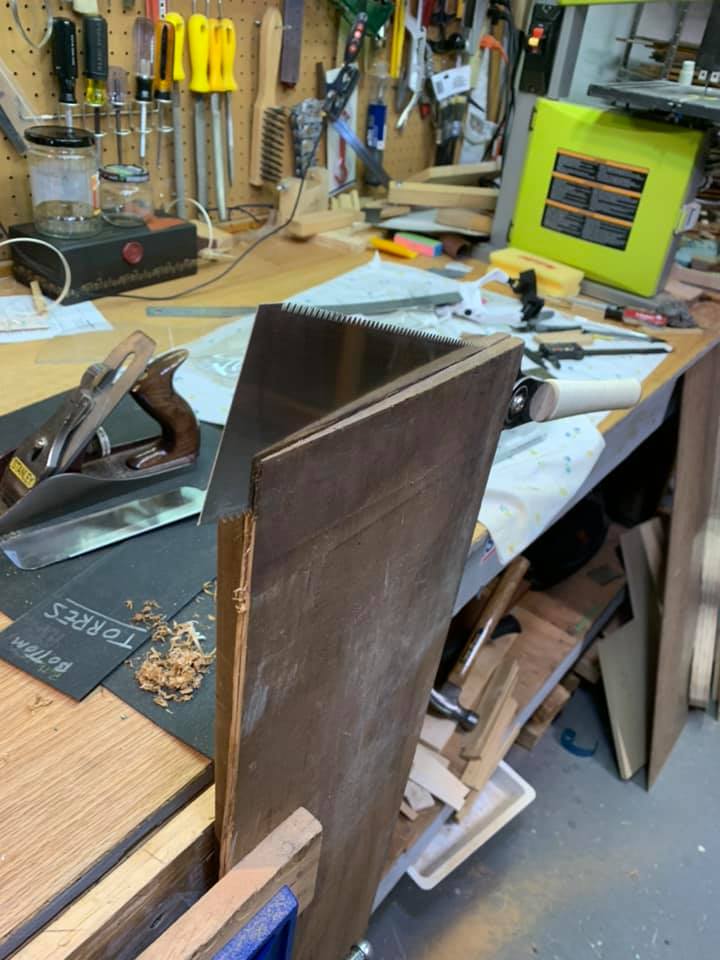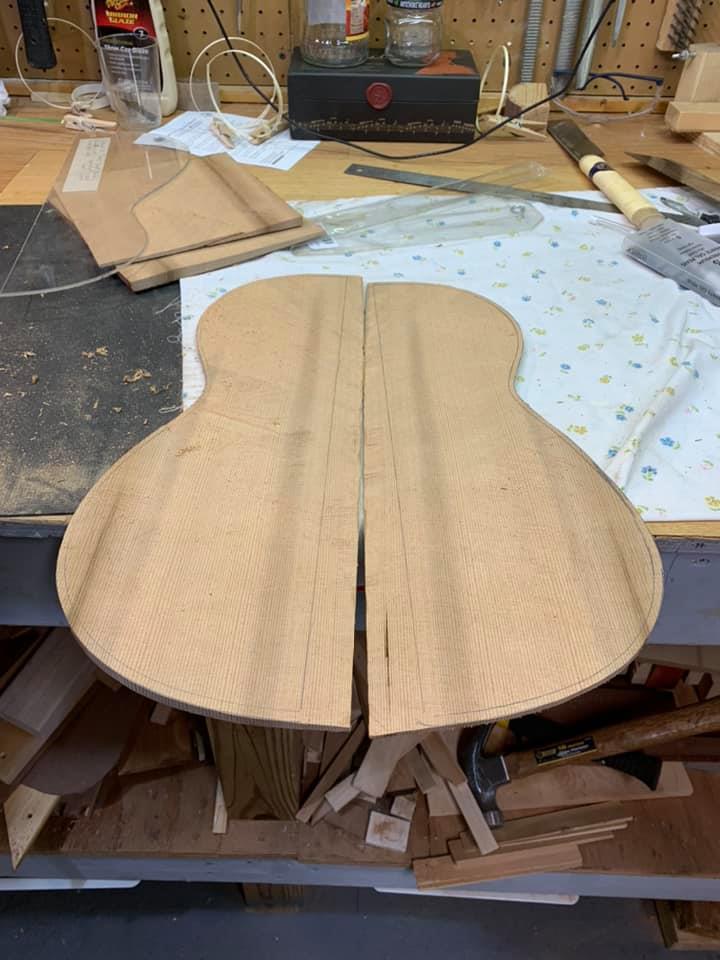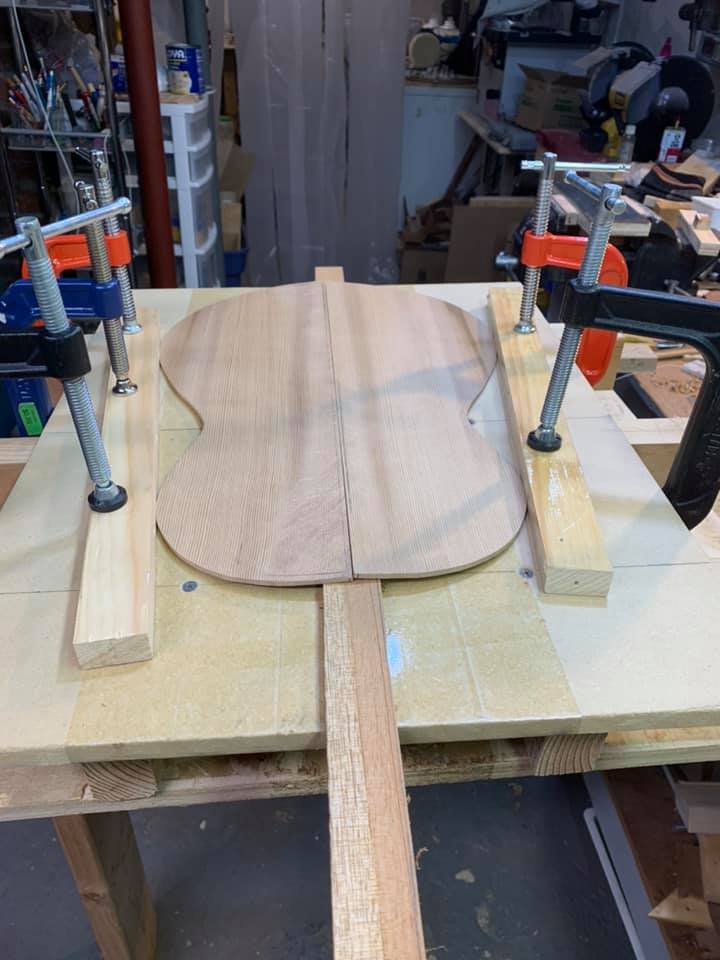Nueva Vida I and Nueva Vida II
As I finished my prior guitar, a classical guitar built with a Western Canadian Cedar top and Bubinga back and sides, I was planning my next build. It was going to be a flamenco guitar based on a Santos model, with a Spruce top and Cypress back and sides. But the events of a morning walk made me change course.
I take a walk most mornings, and on one particular day, I noticed my neighbor from across the street putting out a bunch of wood. Most of it was old plywood and pine, but my eyes caught one piece sticking out of his trash bin. Of course, I needed to take a look. As I was going through his trash, he saw me and came out to say hello. I told him how I make guitars and that some of what he was throwing away looked promising. I explained that the piece I was holding was cedar and quarter sawn. He told me that there was another piece just like it in the other bin and that those pieces had been in the basement from when the house was built about 100 years ago. Here is what I got. 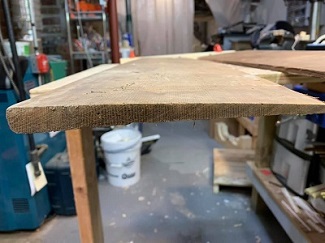
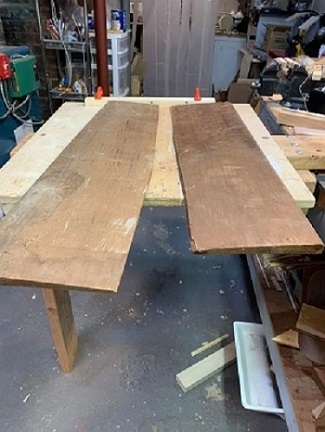
I love reclaimed wood, and when it is of this quality, even better. The fact that it is over 100 years old, contains very low moisture, and is quarter sawn makes these two pieces extremely stable and very special.These shingles were not very wide, so I could not make a standard size classical guitar with them. However, I had just finished a build based on the Antonio Torres FE17 model, a smaller instrument, and these shingles were perfect for that type of guitar. And so, the idea for "Nueva Vida I and II" was born. While these guitars were made with the plantilla from the Antonio Torres FE17, the bracing structure very close to the Torres model, that is where the similarities end. These instruments are more of a mixture of a 19th century and modern guitar. The acoustic box is deeper than that of the FE17 model, providing for a larger volume. The bracing is also a bit different. It still is a five-fan bracing, but has some cross bracing on the treble side providing a bit more strength and crispiness to the treble notes. The top is cedar, giving the guitar very warm tones with strong, growling bases. Both instruments feature laminated necks, which make them very strong. This type of neck does not need any additional reinforcement. Because of this, I can afford to make them a bit thinner, making them extremely comfortable to play. Not to mention, they also look awesome.
I wanted to give these two instruments a bit of a Romantic look, so I decided that I would make a French mustache bridge for them. Nueva Vida I is mostly made with reclaimed wood. In addition to the top (cedar house shingle), the braces came from an old piano soundboard and the neck was laminated with scraps from previous guitar builds. The back and sides came from an old walnut set I had in the shop. The bridge was the only part for which I had to purchase pieces of wood in this construction. Nueva Vida I ended up being a personal build. It is the guitar I play, and I love how comfortable it feels and the sound it has. Nueva Vida II diverts even more from the Antonio Torres FT17 model. The top of this guitar is made out of the cedar from the second shingle and Engelmann spruce. The second cedar shingle was not thick enough for me to get two halves, but I was determined to use every possible piece of the cedar. I decided that it would be fun to make the second instrument with a mix of cedar and spruce. The spruce is on the treble side of the guitar while the cedar is on the bass side of the instrument. This gives additional crispiness to the trebles while still having the warm and round bases. The braces of the second instrument are made from spruce, still a five-brace fan. I drilled holes to the cross braces above and below the sound hole. This makes them lighter while still retaining the strength needed in this area. The neck was constructed with the same lamination style as Nueva Vida I, the only difference being the wood species used in the lamination. The back and side are made from Brazilian lacewood, which, in my opinion, is one of the more musical tone woods I have come across. I named these two guitars Nueva Vida I and Nueva Vida II, as I gave new life to these woods that were going to be discarded.
